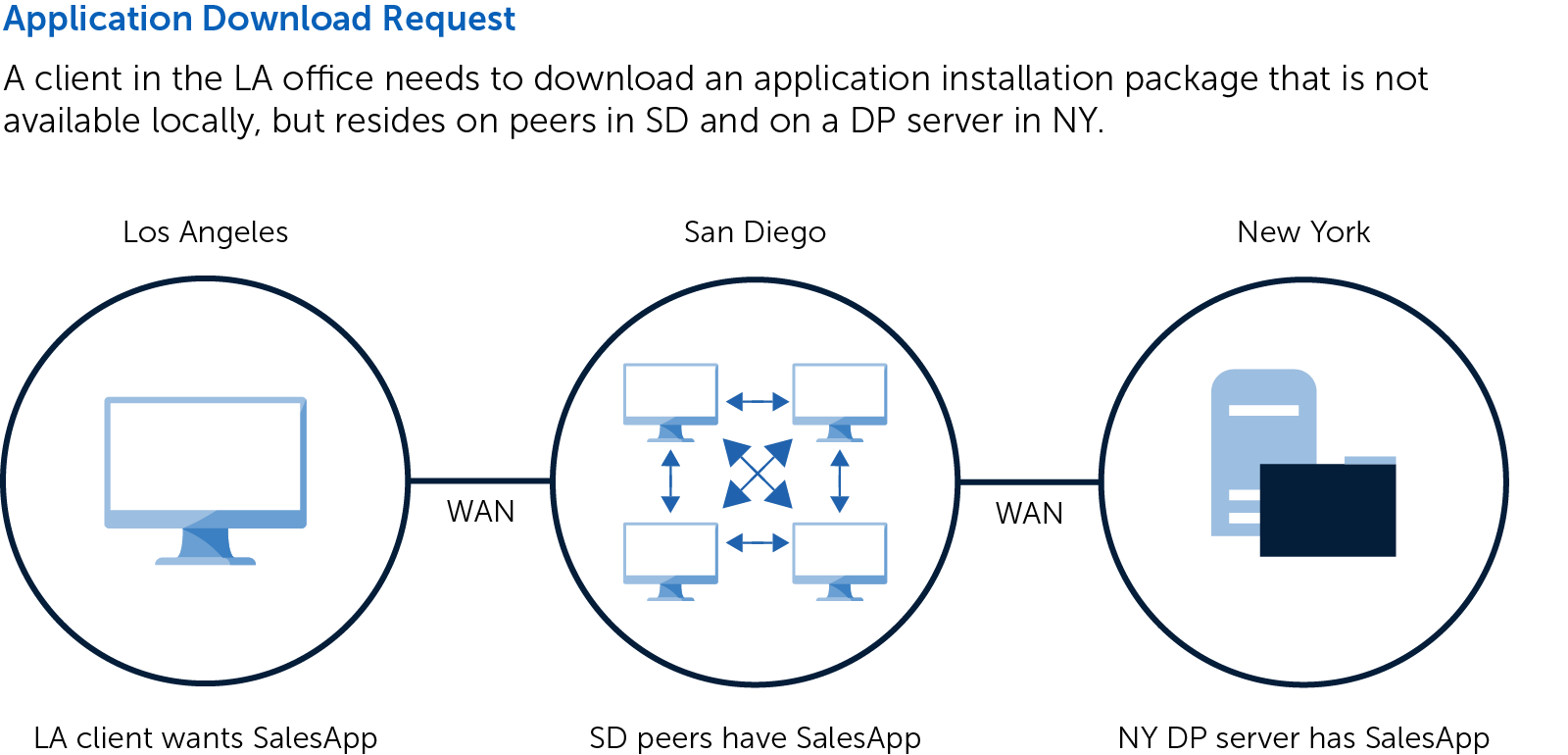In the past, one of the most expensive aspects of ConfigMgr software delivery has been server infrastructure. The costs go far beyond server hardware and maintenance costs. Each server must be configured, administered, patched, tuned, etc. When delivery to an endpoint fails, troubleshooting becomes considerably more complicated and time-consuming because an admin must look at server architecture along with system configuration and uptime. The more servers a peer-to-peer solution can eliminate, the more speed and savings it delivers.
Adaptiva OneSite is the only P2P technology with Topology Optimization (TO). TO eliminates the greatest possible number of servers from a company’s infrastructure by intelligently and efficiently delivering software from the logically nearest peers on the WAN. Here is an example of how it works.
Introduction to Topology Optimization
Imagine a ConfigMgr organization that has a DP server in its main office in New York (NY) while using P2P technology in Los Angeles (LA) and San Diego (SD). Now, let’s say a client in LA wants to download an application. For our example, we’ll call it SalesApp.
The LA client will first look on peer client systems within the LA office and try to get SalesApp there. If it finds it locally, then it will download over the LAN from another peer. It’s when SalesApp doesn’t exist on any other peers in the LA office, and content must be downloaded over the WAN, that Adaptiva OneSite’s Topology Optimization comes into play.



How it Works
As you can see in the series of images above, OneSite downloaded content over the WAN from a nearby source—SD and LA were near to each other on the network. In the real world, companies have very complicated WAN designs linking their facilities. Geographical proximity does not equal WAN proximity.
Adaptiva has created a way to make sure that WAN downloads are efficient. When you set up OneSite, you build out the topology by defining offices and what’s in those offices. Then you set up relationships between them. Each office has a parent.

In the example above, if the content only existed in Dallas, LA would not download directly from Dallas. Instead, OneSite would populate it to SD, and then LA would download from SD. LA does not have to wait for SD to download the content though. As soon as SD starts receiving content, it will also pass it along to LA. So the two sites receive the download almost simultaneously.
Each time an office gets new content, OneSite will automatically create three copies (by default) for redundancy and performance. This results in fewer downloads (less WAN traffic) and faster installations.
In this way, a OneSite client will download content from the “logically nearest” location on the WAN that has it, whether or not that location has a server.
Setting up the relationships is easy. Whenever OneSite finds a subnet that doesn’t have an office, it will auto-create an office. An admin can then right-click and merge to an office, rename, and move in the hierarchy.
Thinking Big(ger)
When you imagine this technology being used not just for a few offices, but for hundreds, or thousands, you can see enormous benefits. This allows users of OneSite to operate with a much more lean server architecture than they can with other P2P technologies.
This is just one of many reasons the 100% of our Fortune 500 and Global 1000 customers recommend Adaptiva (source, independent survey). If you’d like to learn how OneSite can eliminate your software delivery server architecture and boost delivery success rates.






